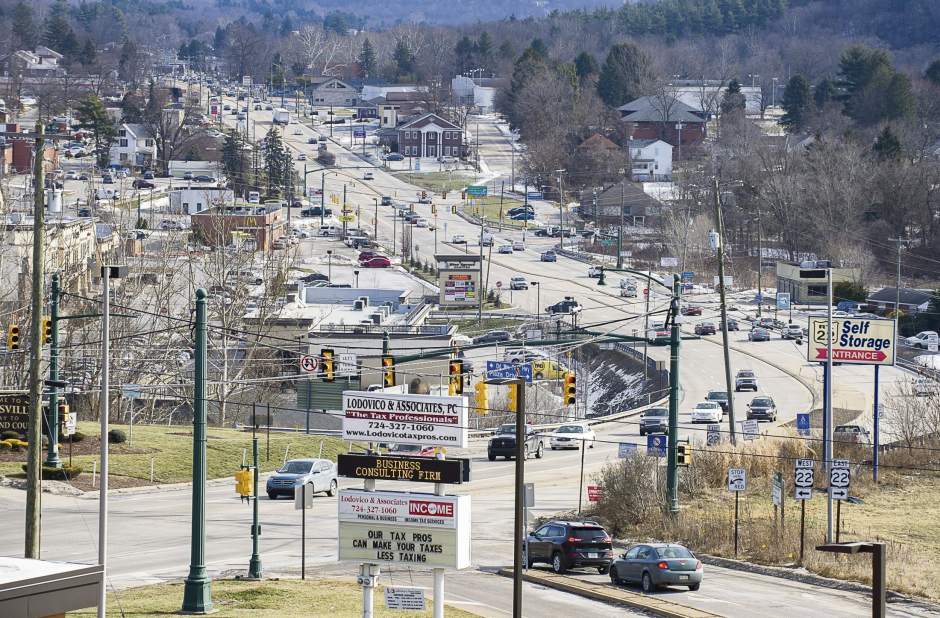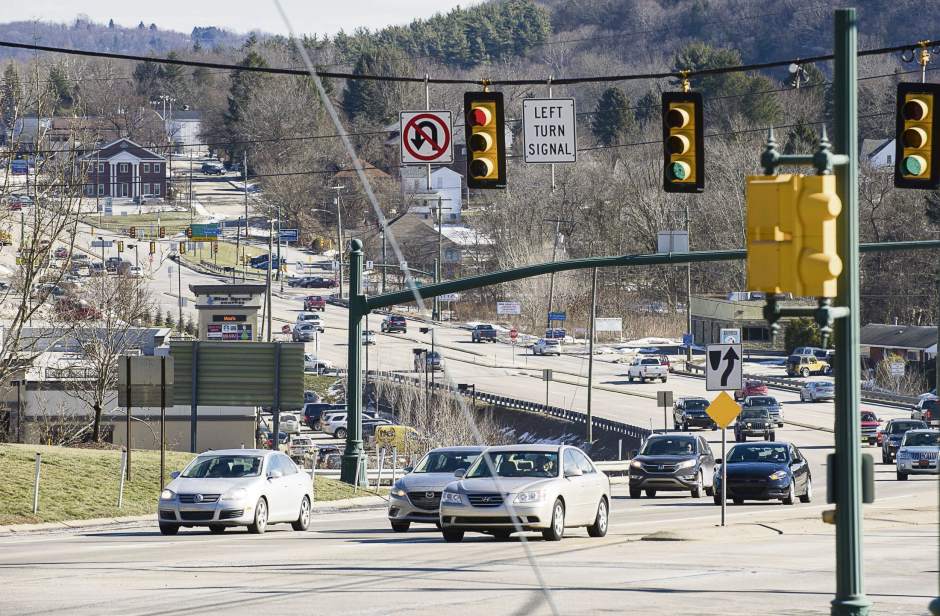Coordinated traffic lights to begin operating on Route 22
A traffic signal system designed to keep cars moving down Route 22 between Monroeville and Murrysville will begin operating Feb. 16.
The system works by coordinating traffic lights at 18 intersections to service turn lanes and side streets based on demand rather than changing from green to red at regular intervals. It has 53 radar detectors to monitor traffic flow and change signals when warranted.
The project was funded by a $1.8 million grant from the Federal Highway Administration. It includes traffic signals along 10 miles of Route 22, from near the Pennsylvania Turnpike to Mellon Road.
In addition to installing the system, PennDOT used federal money to add sensors aimed at reducing response times for police and paramedics who are answering emergency calls. Every intersection that has a traffic signal will have the sensors that use an optical system to detect emergency vehicles as they approach.
Monroeville police Chief Doug Cole said his department has used the sensors since the early 1990s. Monroeville requires that any traffic light installed include the sensors, at the developer's cost.
“The way we set it up is, there's an emitter on the vehicles,” Cole said. “It grabs the sensor and the direction you're traveling and turns the light green where emergency vehicles are traveling and clears the intersection.”
It is not a perfect system, however.
“We've still had vehicles involved in crashes ... and if you're going too fast, you can outrun the light,” Cole said.
A Monroeville police officer was involved in a fatal crash in December 2014 while responding to a call. Priscilla Robinson, 50, of Monroeville died after her vehicle was struck by a patrol car.
Despite the crash, Cole said, the sensor technology has been a useful tool for the department.
“I think it's been very effective,” he said.
After waiting on a replacement part for a signal at the Cline Hollow Road intersection, work on the project was completed in January by Prospect-based contractor Bronder Technical Services.
Kansas-based Rhythm Engineering, which designed the system, will monitor it the week of the activation to ensure all of the traffic signals are running at the best performance possible, PennDOT spokeswoman Valerie Petersen said.
Patrick Varine is a Tribune-Review staff writer.



